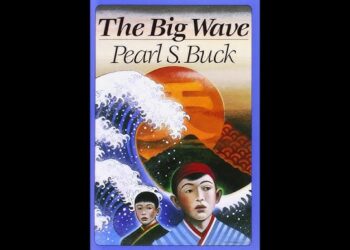Table of Contents
ToggleIntroduction
The Blind Owl Summary And Themes By Sadegh Hedayat Sadegh Hedayat, an Iranian author, first released his book The Blind Owl in 1937. This gloomy and fantastical work, which is frequently considered to be among the most important pieces of contemporary Persian literature, examines themes of loneliness, insanity, and hopelessness. The Blind Owl delves into the profound and frequently unsettling facets of awareness, examining the human psyche through its philosophical undertones and eerie storytelling style.
The book explores themes of death, remorse, and the pursuit of meaning in an uncaring universe through symbolism and fragmented storytelling. It is not a conventional plot but rather an abstract narrative that alternates between reality and fantasy.
Hedayat offers readers a profoundly personal and unsettling glimpse into a man’s psyche as he battles his feelings, ideas, and existential anxieties in the novel. It is a story about the incapacity to leave the shadows of one’s own thoughts and the failure to establish connections with other people. The reader is given a succession of fragmentary and unconnected narratives of the narrator’s life, which merge dreamy scenes with memories of personal trauma and loss. The narrator’s identity is kept a secret throughout the book.
The novel’s depiction of the mental suffering, hopelessness, and loneliness that permeate the human experience has had a significant impact both in Iran and abroad. It is a somber reflection on the nature of death and existence, as well as the pursuit of meaning and identity in a confusing and chaotic world. The Blind Owl is a potent literary work that strikes a deep chord with readers who are interested in the darker facets of human nature because of its emphasis on psychological terror, symbolism, and a pervading sense of disappointment.
Summary of The Blind Owl
The Blind Owl begins with a deeply unsettling and fragmented narrative that follows the unnamed narrator through a series of vivid, dreamlike sequences. The narrator begins by reflecting on his experiences of isolation and alienation, describing his life as one filled with inner turmoil and emotional detachment. He claims to be haunted by a sense of guilt and despair, which becomes increasingly apparent as the story unfolds.
The narrator is a man consumed by his own thoughts and memories. He recounts his existence as a lonely, disillusioned artist who has become estranged from society. His days are spent in solitude, and his only form of communication seems to be with his own inner demons. At the heart of his emotional turmoil is a mysterious woman, whom he both desires and fears. She represents an elusive, unattainable ideal of love and beauty, but at the same time, she embodies the narrator’s deepest fears and insecurities.
In the novel, the boundaries between reality and fantasy blur, and the narrator’s mind becomes increasingly fragmented as he recounts his obsessions and hallucinations. He experiences visions of death, decay, and violence, which appear to both torment and fascinate him. These visions are not simply isolated hallucinations but seem to represent a deeper existential crisis, as the narrator grapples with his perception of self and the world around him.
The narrator’s obsession with the mysterious woman intensifies throughout the novel, but this obsession takes on an almost pathological quality. He is unable to reconcile his desires with his overwhelming sense of powerlessness. His fantasies about the woman shift between longing, hatred, and fear. There is a sense that the woman represents both his ideal of beauty and love as well as the destructive forces that torment him. As the story progresses, the woman becomes more and more associated with death, symbolizing the narrator’s fear of mortality and the futility of his desires.
The novel also includes sections that blur the lines between past and present. The narrator reflects on his past experiences, particularly a tragic incident involving his mother and the memory of a death that haunts him throughout his life. These flashbacks, along with his current delusions, create a sense of disorientation for both the narrator and the reader. The events of his life are refracted through the lens of his madness, and the narrative becomes increasingly unreliable, making it difficult to distinguish between what is real and what is imagined.
A central motif in The Blind Owl is the image of the eye. The narrator often refers to the eye as a symbol of perception and truth, but it is also a symbol of blindness. Throughout the novel, the narrator struggles with his inability to see and understand the world around him, both literally and metaphorically. The title of the novel itself, The Blind Owl, suggests that the narrator is someone who is unable to perceive the reality around him, locked in a world of illusion and mental anguish.
Read more
As the novel progresses, the narrator’s descent into madness becomes more pronounced. He speaks of his encounters with death, describing it as an all-consuming force that he cannot escape. The theme of death is explored in various forms: the death of loved ones, the narrator’s own fear of death, and the death of the self. There is a constant sense of impending doom, and the narrator’s life seems to be defined by an inescapable cycle of despair.
In the final sections of the novel, the narrator’s thoughts become even more fragmented. He begins to question his own identity, suggesting that he may not even be a real person, but rather a product of his own mind. The novel ends in a surreal and ambiguous manner, leaving the reader to ponder the true nature of the narrator’s existence and the meaning of his experiences.

Major Themes of The Blind Owl
1. Isolation and Alienation
One of the primary themes in The Blind Owl is the profound sense of isolation and alienation that the narrator experiences. From the very beginning of the novel, the narrator is depicted as a man who is estranged from the world and incapable of connecting with others. His emotional distance from those around him, coupled with his inability to communicate his inner turmoil, creates a sense of deep loneliness and alienation. This theme reflects the existential struggle to find meaning and connection in an indifferent and often hostile world.
2. Madness and the Fragmentation of the Self
The novel also explores the theme of madness, particularly the ways in which the mind can become fragmented and distorted. The narrator’s descent into madness is a central aspect of the novel, and much of the narrative is devoted to his increasingly unstable mental state. The novel uses a fragmented narrative style to mirror the narrator’s disjointed thoughts and perceptions. This theme reflects the idea that the mind, when pushed to its limits, can break down and become consumed by delusion and hallucination.
As the narrator becomes more consumed by his obsessions and fears, his sense of self becomes more tenuous. He questions his own identity and begins to wonder if he is even real. This dissolution of the self is a key aspect of the novel’s exploration of psychological disintegration.
3. Death and Mortality
Death is another central theme in The Blind Owl. The narrator is obsessed with the idea of death, which permeates his thoughts and hallucinations. Throughout the novel, he is haunted by the images of death, decay, and violence. His fear of death becomes intertwined with his fear of his own inability to escape the torment of his thoughts and emotions. Death in the novel is not just a physical event, but also a symbol of the existential void that the narrator faces: the ultimate emptiness of life and the inevitability of mortality.
Read more
4. Guilt and Regret
The narrator is burdened by a deep sense of guilt and regret throughout the novel. His feelings of guilt stem from a traumatic event in his past, and his inability to come to terms with this event drives much of his inner turmoil. He constantly reflects on his past mistakes and the ways in which they have shaped his present existence. This theme reflects the broader existential idea that one’s past actions and decisions can never be fully escaped, and they can continue to haunt an individual, even in the face of death.
5. The Illusory Nature of Reality
Throughout the novel, the narrator’s perceptions of reality are constantly questioned. The boundaries between fantasy and reality are blurred, and the narrator’s experiences often feel like fevered dreams or hallucinations. This theme reflects the idea that reality is a subjective construct, shaped by the mind’s desires, fears, and anxieties. The narrator’s fragmented consciousness raises questions about the reliability of perception and the possibility of ever truly understanding the world around us.
6. The Power of Obsession
Obsession is a key theme in The Blind Owl, particularly the narrator’s obsession with the mysterious woman. His obsessive thoughts about her shape much of his emotional landscape, and his inability to reconcile his desires with his sense of powerlessness defines his psychological breakdown. This obsession becomes an all-consuming force that distorts his perception of reality and ultimately contributes to his mental disintegration.
7. The Search for Meaning
The search for meaning is a central existential theme in the novel. The narrator’s constant questioning of his existence, his desire for understanding, and his search for truth are all driven by a deeper yearning to make sense of life. However, the novel suggests that the search for meaning may be a futile one, as the narrator’s quest for understanding only leads him further into despair and madness.

Conclusion
The Blind Owl is a powerful and unsettling novel that delves deep into the human psyche. Through its exploration of themes such as isolation, madness, death, guilt, and the search for meaning, the novel offers a poignant commentary on the fragility of the human mind and the darkness that can reside within it. Hedayat’s use of fragmented storytelling, symbolism, and surrealism creates a deeply immersive experience for the reader, one that forces them to confront the limits of perception and the inevitability of despair.
Read more
FAQ
1. What is the meaning of the title The Blind Owl?
The title is a metaphor for the narrator’s inability to perceive the world around him clearly. The owl, traditionally a symbol of wisdom and insight, is blind, suggesting that the narrator is unable to see the truth of his existence or the reality of his surroundings. This blindness symbolizes the narrator’s mental and emotional disintegration.
2. What role does the mysterious woman play in the novel?
The woman in The Blind Owl represents both desire and fear. She is an idealized figure that the narrator longs for, but she also embodies the darker aspects of his psyche. The woman symbolizes the narrator’s unattainable desires and his deeper fears of death and decay.
3. Is The Blind Owl a reflection of Sadegh Hedayat’s own life?
While The Blind Owl is not an autobiography, it is often seen as a reflection of Hedayat’s personal struggles with depression, isolation, and despair. The novel’s dark themes and existential concerns mirror Hedayat’s own disillusionment with life and his personal battles with mental health.
4. What is the significance of the eye in the novel?
The eye symbolizes both perception and blindness. The narrator is obsessed with the idea of seeing and understanding, but his inability to truly see the world around him suggests that perception is unreliable and subjective. The eye also represents the narrator’s struggle to understand the deeper truths of existence.
5. How does The Blind Owl explore the theme of madness?
The novel explores madness through the narrator’s fragmented thoughts and perceptions. As the narrator’s mental state deteriorates, the lines between reality and delusion blur, and the narrative becomes increasingly disjointed. This fragmentation reflects the narrator’s psychological breakdown and his inability to make sense of his existence.
6. What is the existential message of the novel?
The Blind Owl presents a deeply existential worldview, where the search for meaning is ultimately futile. The novel suggests that life is inherently meaningless, and the attempt to find purpose or understanding often leads to despair. The narrator’s descent into madness serves as a metaphor for the emotional and psychological toll of confronting this existential emptiness.
Read more

















